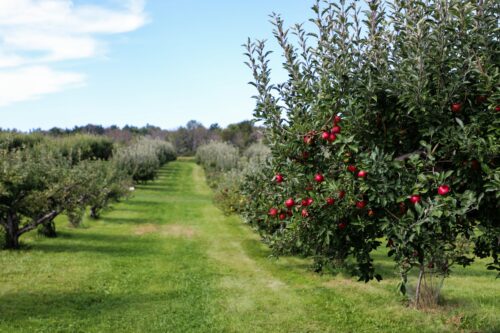It’s a universal experience: going on grocery store trips, excited about a fresh box of berries or refreshingly crisp lettuce leaves, only to go home and discover mushed berries or wilted leaves. Produce, grown at large scales and shipped around the world, is prone to nutrient issues. Despite different fertilization methods to compensate for nutrient deficiencies, certain nutrients—specifically iron—do not have biologically available forms, an issue exacerbated by climate change.
Most farmers get around this issue using foliar fertilization, a practice where fertilizer is directly applied to leaves to solve micronutrient deficiencies. To study how plants uptake iron in foliar fertilization, plant nanobionics researchers at the Disruptive Sustainable Technologies for Agricultural Precision group (DiSTAP) have developed near-infrared fluorescent nanosensors using the Corona Phase Molecular Recognition (CoPhMoRe) technique. CoPhMoRe can distinguish between iron(II) and iron(III), the two oxidation states of iron critical in metabolism. “Iron powers processes like photosynthesis, but plants often struggle to get enough of it or handle too much,” said Duc Thinh Khong, a research scientist at the DiSTAP and the study’s lead author.
Previous sensors provided static measurements, were unable to accurately differentiate between iron(II) and iron(III), and were obscured by the different vascular features of plants. Overcoming the limitations of past studies, CoPhMoRe is dynamic, dually detects both iron states, and uses near-infrared fluorescence to penetrate plant tissue. To offer perspective, the sensor detects substances on a scale of ten nanometers—roughly the diameter of a water molecule—enabling exact real-time localization of iron diffusion.
Using CoPhMoRe, the team found that a variety of plants were processing iron in novel ways. “One particularly striking observation was the variability among plant species in processing exogenous iron, with each exhibiting distinct capacities to handle different forms and dosages,” Khong said. Comparisons across healthy plant samples and plants affected by abscisic acid (stress hormone) demonstrated that the movement of iron within leaves is influenced by water mobility due to stomatal transpiration, a process where water evaporates from pores in the leaves. Furthermore, the researchers confirmed that abiotic stresses, such as stress hormones, increase iron deficiencies in plants by causing decreased iron mobility.
Yet a larger question looms: Can these nanosensors be applied on a wide agricultural scale, and will they improve our grocery shopping experiences?
Although affordability will depend on prototype refinement and industry, the sensors have the potential to improve crop yield, reduce over-fertilization, and support the growing movement towards more sustainable agriculture. Within the next two to three years, they also hope to expand the nanosensing technology to other nutrients like zinc and magnesium to develop a comprehensive monitoring system, especially for hydroponics (growing plants with nutrient-rich water instead of soil), to expand urban farming practices. “To make this technology more accessible, we envision a future prototype for a single-use test strip, designed to be as simple and convenient as a COVID test,” Khong said.
Although most people see plants as leaves and stems, there’s much more going on in the greenery. “It’s a window into the secret life of plants, and a big step toward smarter, more sustainable farming,” Kong said. “Plus, this is the first tool ever reported to do this—nobody’s seen iron’s journey in plants this way before, which makes it pretty exciting!”

